邊緣塗黑
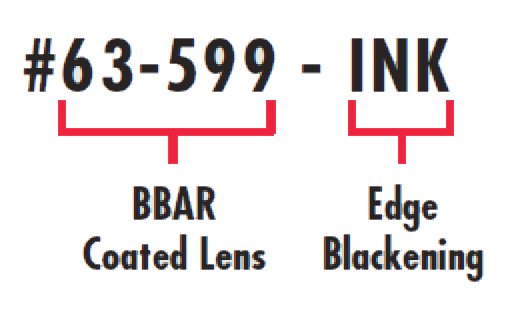 如何指定邊緣塗黑光學元件
如何指定邊緣塗黑光學元件 可以指定任何直徑為 5mm 以上的透鏡的邊緣塗黑。為了指定塗黑,只需在 BBAR 鍍膜的庫存編號加上 INK。例如,若要訂購直徑為 10mm、焦距為 10mm 且有黑色邊緣的 VIS 0° 鍍膜 DCX 透鏡,其庫存編號將為#63-599-INK。
雜散光
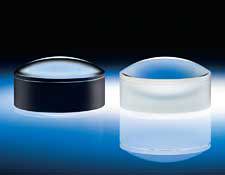
將透鏡組裝到多鏡片系統中時,整體性能的常見限制因素之一就是雜散光。雜散光屬於光學系統通光孔徑外部的能量,並且會在接觸到光學元件或機械元件(圖 1)的邊緣時散射,最終以雜訊(而非信號)的形式傳入感測器。減少系統內雜散光的一種常用方法是將系統中的光學元件邊緣塗黑。
測量 BRDF
散射信號通常被量化為每單位立體角或逆球面度的散射光強度。透過將散射源上入射光的強度結果規格化,散射結果變得更有意義。此函數通常被稱為雙向反射分布函數,簡稱 BRDF。簡化的 BRDF 計算式是定義每個立體角反射光與入射光的強度比。通過將雷射投射到與正常面成固定角度的表面來完成量測。然後,感測器圍繞散射點旋轉,以記錄輻照度的變化,作為角度的一個函數(圖 2)。

圖 1:由 FOV 外部物體反射的光從沒有邊緣塗黑的透鏡邊緣散射
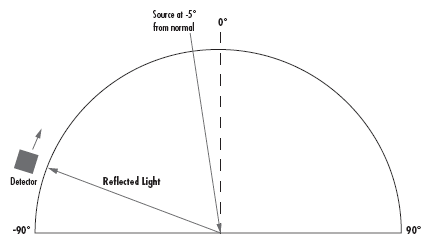
圖 2:感測器記錄輻照度,作為角度的一個函數
比較這一測試的結果,一個是邊緣塗黑的表面,另一個則是無鍍膜的磨砂玻璃,以模擬光學元件的邊緣。該圖顯示了透過邊緣塗黑來減少雜散光並提高光度的數量級。這種改善可能會降低對昂貴的機械系統的需求。使感測器相對正常表面的角度接近 -90°,由於入射的高角度,記錄的入射光百分比接近於零。在 -5° ,記錄的入射光百分比也是 0%,因為感測器會遮蓋光源。在 +5,由於鏡面反射(入射角等於反射角),入射光百分比出現一個峰值。當感測器相對正常表面的角度再次接近 90° 時,記錄的入射光百分比接近於零。
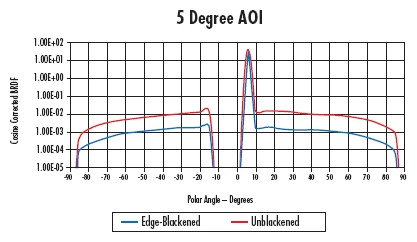
圖 3:未塗黑透鏡和已塗黑透鏡的 BRDF 圖
結果
圖 4 和 圖5 展示了感測器成像點光源經由透鏡產生的輻照度輪廓。圖 4 是由標準的光學元件生成,而圖 5 則是由邊緣塗黑的光學元件生成。圖 4 中所示的雜散光影響較高的雜訊層,實際上會沖洗圖像,從而降低圖像對比度。
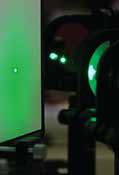
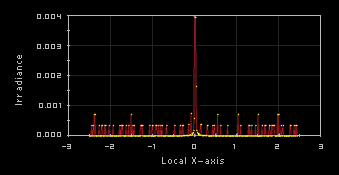
圖 4:傳統的結果 — 經由成像感測器中心(透鏡邊緣未塗黑)的輻照度分布的線性輪廓
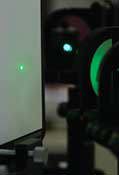
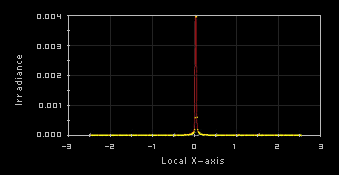
圖 5:邊緣塗黑的結果 — 經由成像感測器中心(透鏡邊緣已塗黑)的輻照度分布的線性輪廓
邊緣塗黑、符合 RoHS 標準的抗溶劑墨水現在是許多愛特蒙特透鏡的庫存產品。查看庫存編號末尾是否有表示邊緣塗黑的 INK 尾碼。如果不作為庫存產品提供,也可以透過光學原型製造提供邊緣塗黑。


























or view regional numbers
QUOTE TOOL
enter stock numbers to begin
Copyright 2023, Edmund Optics Inc., 14F., No.83, Sec. 4, Wenxin Road, Beitun District , Taichung City 406, Taiwan (R.O.C.)
Privacy Policy | Cookie Policy | Terms & Conditions | Accessibility
California Consumer Privacy Act (CCPA): Do Not Sell My Information